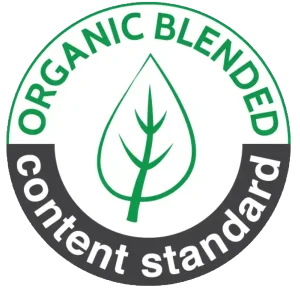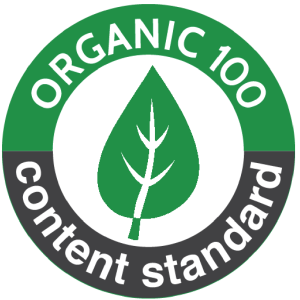Fabric colorfastness testing is a critical step to ensure the quality of textile products before they enter the market. This article will provide a detailed guide on 7 methods for fabric colorfastness testing according to ISO and AATCC standards, helping businesses effectively control their production process and mitigate the risk of color fading.
1. Why is Fabric Colorfastness Testing Essential?
Nội dung tóm tắt
Toggle
Fabric colorfastness refers to the ability of a fabric to retain its color after being exposed to factors such as washing, rubbing, light, sweat, and chemicals. This is a crucial criterion in textile quality control, helping to minimize complaints, reduce return rates, and enhance brand reputation.
Fabric colorfastness testing according to international standards like ISO and AATCC also helps businesses easily meet the technical requirements of global partners.
2. International Standards for Fabric Colorfastness Testing
2.1. ISO 105 Standard
ISO 105 is the international standard system used to evaluate fabric colorfastness under various conditions. This standard includes:
- ISO 105-C06: Test for colorfastness to washing.
- ISO 105-X12: Test for colorfastness to rubbing.
- ISO 105-B02: Test for colorfastness to light.
- ISO 105-E01: Test for colorfastness to chemicals.
2.2. AATCC Standard
AATCC (American Association of Textile Chemists and Colorists) is the organization that establishes colorfastness testing standards in the United States. Common methods include:
- AATCC 61: Test for colorfastness to industrial laundering.
- AATCC 8: Test for colorfastness to rubbing.
- AATCC 16: Test for lightfastness.
For detailed information, refer to the ISO Official Website and AATCC Organization.
3. 7 Fabric Colorfastness Testing Methods

3.1. Washing Test (ISO 105-C06)
A fabric sample is immersed in a standard washing solution at 40–60°C for 45 minutes. Color fading is assessed using a gray scale from 1 (severe fading) to 5 (no fading).
3.2. Rubbing Test (ISO 105-X12)
A Crockmeter is used for 10,000 rubbing cycles to evaluate the fabric’s ability to retain color under both dry and wet friction.
3.3. Lightfastness (ISO 105-B02)
A Xenon Fadeometer machine simulates UV rays shining on the fabric for 20 hours. The pass level is grade 4 or higher on an 8-point scale.
3.4. Perspiration Test (ISO 105-E04)
The sample is soaked in an artificial perspiration solution at pH 5.5 and 37°C for 4 hours to check its ability to retain color when the fabric comes into contact with skin.
3.5. Chemical Resistance (ISO 105-E01)
The fabric is immersed for 30 minutes in an acid, alkali, or chlorine solution. Color fading is checked against the standard gray scale.
3.6. Heat Resistance (ISO 105-X23)
A fabric sample is placed at a temperature of 150°C for 10 minutes. Any changes in color and surface texture are observed.
3.7. Color Difference Measurement (Spectrophotometer)
A Spectrophotometer measures the color difference (ΔE). The ideal value is ΔE ≤ 1.0 to ensure color accuracy during printing and dyeing.
4. Essential Equipment for Colorfastness Testing

Recommended equipment includes:
- ISO 105-C06 wash fastness tester
- Crockmeter
- Xenon Fadeometer
- Konica Minolta CM-26d Spectrophotometer
For more information on equipment, refer to reputable suppliers like James Heal and SDL Atlas.
5. Long-Term Benefits of Fabric Colorfastness Testing
- Reduces the rate of defective goods due to color fading.
- Enhances product reputation and meets export partner requirements.
- Saves costs on post-inspection and reduces product returns.
6. Testing Procedure and Reporting
- Prepare test samples of the correct size and clean off any dust.
- Perform the testing steps according to international standards.
- Evaluate the results using the grading scale or Delta E.
- Compile a report, analyze any discrepancies, and suggest adjustments if necessary.
7. Pros and Cons of Testing Methods
Pros: High accuracy, allows for comprehensive quality control. Cons: Requires investment in equipment and training for technicians.
8. Important Notes for Implementation
- Calibrate equipment every 6 months.
- Maintain laboratory conditions at 20–25°C with 65±5% humidity.
- Keep control samples for easy comparison of results across different production batches.
9. Professional Fabric Finishing Services at VieTextile
VieTextile is proud to offer in-depth fabric finishing and treatment services:
- Correcting uneven colors and fading.
- Enhancing color brightness and vibrancy.
- Antibacterial finishing for medical and sportswear fabrics.
- Stabilizing fabric shrinkage to under 2% for both knit and woven fabrics.
Contact VieTextile via hotline 0901 809 309 or email info@vietextile.com for a free consultation and a quick quote.
Related Content:
10. Q&A about VieTextile’s Fabric Treatment Services
Q1: How does VieTextile handle uneven fabric colors? We use color-stabilizing chemicals combined with a separate flow technology to ensure uniform color and prevent fading.
Q2: How does VieTextile increase fabric colorfastness to light? We apply nano-coating with light-enhancing agents to help the fabric retain its vibrant color and resist long-term fading.
Q3: How durable is VieTextile’s antibacterial treatment? We use Ag+ and ZnO antibacterial coating technology to eliminate 99.9% of bacteria, maintaining its effectiveness after multiple washes.
Q4: How does VieTextile control fabric shrinkage? We combine pre-treatment enzymes and reinforce the fiber structure to minimize shrinkage and ensure dimensional stability.
Q5: Can I choose multiple treatment services at once at VieTextile? Absolutely. We design combined service packages based on the unique requirements of each customer.










